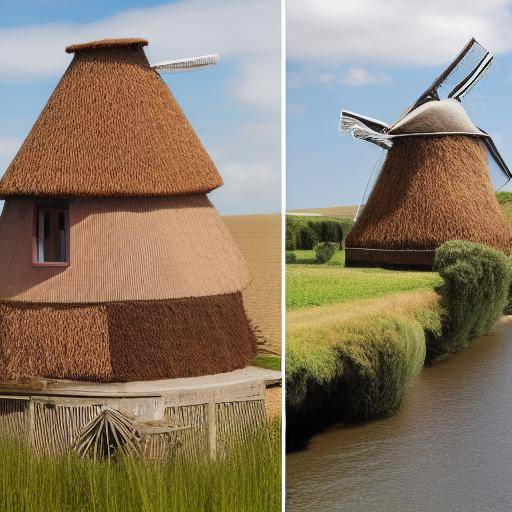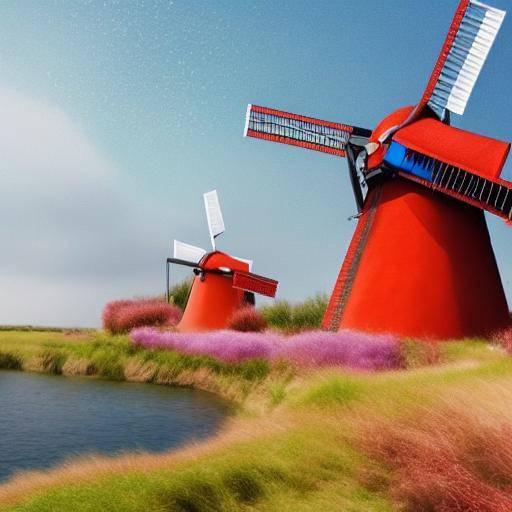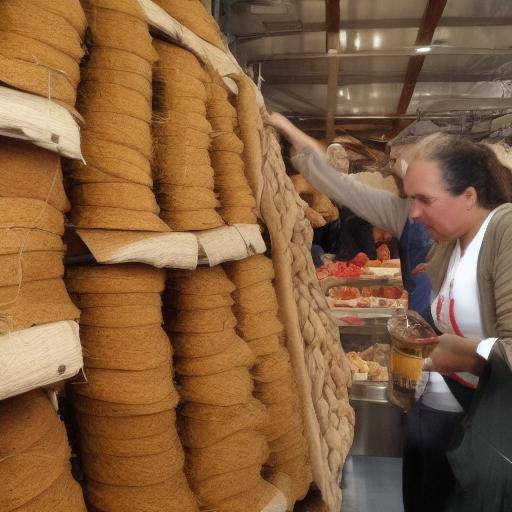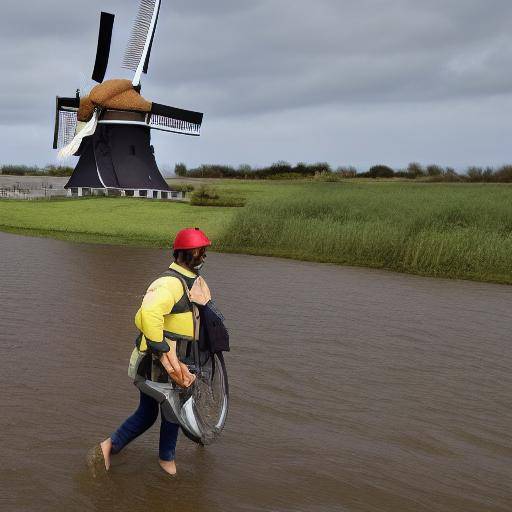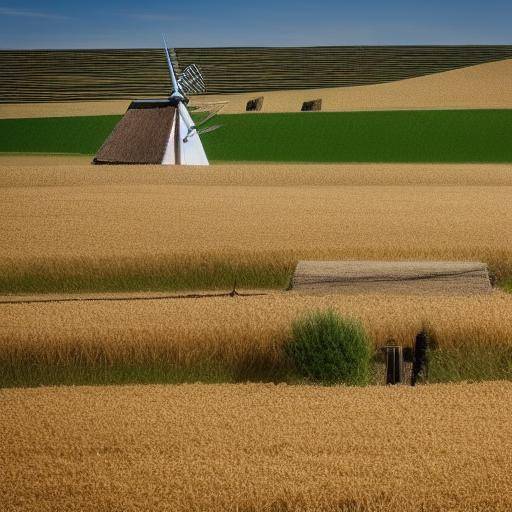
In the gentle Dutch countryside, windmills are erected as silent witnesses of a cultural heritage rooted in the history of the country. These majestic structures not only represent traditional engineering and technical innovation, but also the deep connection of Holland with its agricultural roots. Throughout this article, we will explore the fascinating history of windmills in Holland, their evolution over the centuries, their relevance today, and their impact on the cultural identity of the nation.
Introduction
Since time immemorial, windmills have been emblematic in the picturesque geography of the Netherlands, highlighting itself as impressive monuments that enhance the rural landscapes of wide fields, canals and skies. They are not only an iconic symbol, but they also played a vital role in the economic and social development of the Netherlands. In this article, we will immerse ourselves in history, cultural significance and the contemporary importance of windmills in the Dutch context.
History and Background
In the 13th century, windmills made their first appearance in the Netherlands. Originally, they were used to drain excess water from extensive lowlands, creating conditions conducive to agriculture and livestock. These ingenious mechanical devices became a fundamental part of the agricultural revolution, transforming the ancient swamps into fertile and habitable lands. The innovation and ingenuity of the Dutch windmills contributed significantly to the economic growth and well-being of the population, thus marking the beginning of an era of prosperity.
Over the centuries, the function of windmills was diversified, and its design evolved to encompass a variety of uses, including grain grinding, oil production, paper manufacturing and wood sawing. This adaptability demonstrated the versatility and lasting importance of windmills in Holland's economy and everyday life.
Detailed Analysis
Reviewing the Dutch fields, windmills embody the perfect symbiosis between function and form. Its cultural impact transcends the purely utilitarian, becoming symbols of national pride and emblematic tourist attractions. Moreover, the preservation of these historical monuments, many of which date back centuries, demonstrates Holland's commitment to the preservation of its cultural heritage.
The windmills have not only left an indelible mark on Dutch history and heritage, but have also gained international recognition, attracting visitors from around the world. Its uniqueness and historical importance have led several of these mills to be designated as world heritage sites by UNESCO, thus consolidating their status as global cultural treasures.
Comprehensive review
As modern technology advances, windmills continue to play a crucial role in the generation of sustainable energy. The Netherlands, known for its progressive approach to renewable energy, has effectively integrated wind energy into its energy matrix, using contemporary windmills to boost its commitment to sustainability and reducing carbon emissions. This transition to cleaner energy sources has not only contributed to the mitigation of climate change, but has also encouraged innovation in the design and efficiency of windmills.
In addition, windmills have inspired artists, writers and filmmakers, becoming recurrent motives in artistic expression and popular culture.## Conclusion
In conclusion, the Dutch windmills are much more than mere historical artifacts or technological ingenuities; they are living symbols of the Dutch identity, silent witnesses of their past and beacons of hope for a sustainable future. The combination of engineering, aesthetics and cultural meaning makes them an invaluable heritage, whose preservation and promotion are fundamental to future generations. By embracing its historical legacy and its contemporary potential, the Dutch windmills will continue to shape the country's cultural narrative and serve as a lasting link between rural past and modern development.
Frequently asked questions
What is the historical importance of windmills in Holland?
The windmills played a crucial role in the economic development of the Netherlands by draining the lowlands, allowing the expansion of agriculture and livestock. In addition, its versatility in grain grinding, oil production and other industries was essential for the country's industrial growth.
How many historic windmills are preserved in the Netherlands?
It is estimated that about 1200 windmills have survived in the Netherlands, many of which date back to the seventeenth and eighteenth centuries. These mills vary in functionality and design, reflecting their historical and cultural diversity.
How has the use of windmills in the modern era evolved?
In the modern era, windmills have evolved to generate renewable energy. The Netherlands has effectively integrated wind energy into its energy infrastructure, contributing to environmental sustainability and carbon reduction.
What is the cultural impact of windmills in Holland?
Windmills have reached an emblematic status in Dutch culture, being recognized as symbols of national pride and outstanding tourist attractions. Its preservation and promotion represent a commitment to the conservation of historical and cultural heritage.
How was the construction of windmills financed in the past?
In general, windmills were financed by private investors or local communities. The return of the investment was obtained through the provision of grinding, oil production or other goods, ensuring a steady flow of income.
Where can the most famous windmills in Holland be found?
The Kinderdijk, Zaanse Schans and Schiedam mills are recognized as some of the most emblematic sites that host a variety of historic and representative windmills of the country's rich heritage.
With the completion of these frequent questions, it is expected to have clarified all the unknowns about the Dutch windmills, their history and their impact on the Dutch culture.
Wind Molinos in the Netherlands: A Legacy Cultural
The history, legacy and the current relevance of the Dutch windmills are intertwined in a fascinating story that reveals the technical mastery, the ingenuity and the deep connection with the earth. These structures, which transcend the merely architectural, have significantly influenced the Dutch landscape and the collective identity of the country. Through the preservation, innovation and constant appreciation of their legacy, windmills continue to be a cultural treasure that symbolizes perseverance, creativity and the vision of a sustainable future.

